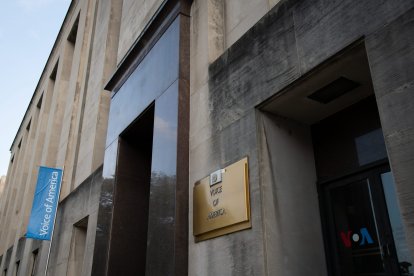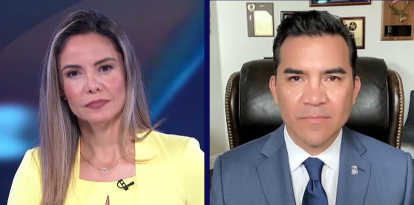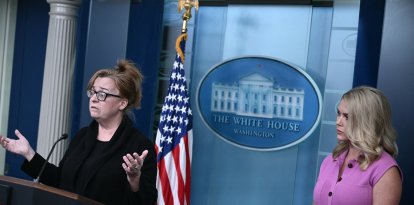DOGE cuts $400 million in federal office leases and seeks more savings: "These buildings are old, underused, and falling apart"
The Government Efficiency Subcommittee estimated the cost of maintaining state-owned real estate at $10 billion.

The Wilbur J. Cohen Federal Building, one of the administration's questioned expenditures.
The Department of Government Efficiency (DOGE) canceled over 670 federal office leases, including an IRS office in Franklin, Tennessee, and a National Park Service space in Moab, Utah. This totaled 7.9 million square feet of office space, resulting in an estimated savings of around $400 million for taxpayers, according to the department.
"The federal government owns a massive real estate portfolio of more than a quarter million buildings," said Rep. Marjorie Taylor Greene, chair of the Subcommittee on Government Efficiency. "No one knows how much of this real estate is actually being put to use, or what it's worth on the open market," she added during a recent hearing on the federal real estate portfolio, which she estimated costs $10 billion annually to maintain.
"The Government owns several hundred million square feet of office space alone. But these office buildings are generally old, underused and falling apart," she added. She pointed to the very auditorium from which she was speaking—the Wilbur J. Federal Building. Cohen, home of the U.S. Agency for Global Media(USAGM) and Voice of America (VOA). "The building has been partially vacant and deteriorating for decades," she noted, especially after both agencies underwent significant cuts under the administration's reforms.
Joe Biden signed a contract late last year to relocate VOA to a new headquarters: "One of the fanciest office buildings in this town," costing billions and "with zero broadcast capabilities," "something you'd think would be essential for a broadcast media agency."
A long-standing problem
Despite the government’s new push to overhaul wasteful spending on public real estate, the issue is not new. The Government Accountability Office (GAO) has been highlighting it for over 20 years, expressing concern over the "large amounts of underused property and the significant difficulty in disposing of unneeded holdings."
In December of last year, the General Services Administration (GSA) identified 34 properties that should be disposed of, potentially saving $1.8 billion over the next 10 years. A year earlier, a GAO study revealed that 24 agencies examined were using half or less of their allotted space in Washington, D.C.
Reports from the latter also highlight several issues. Among them, they note that many of their recommendations are collecting dust, with little action taken by secretaries or legislators. Another concern is the costs associated with the properties, including expenses related to meeting safety standards or maintaining the facilities. On the latter, they found multiple instances of deferred maintenance tasks:
"GAO found that these needs had more than doubled, from $170 billion to $370 billion between fiscal year 2017 and 2024."
Another issue they highlight, which is common when discussing the network of federal agencies, is a lack of information: "We have identified problems with the reliability of federal real property data."

World
Hegseth announces $5.1 billion in additional Defense Department spending cuts
Williams Perdomo
"The high cost of decorating and redecorating the administrative state"
"Today’s expansive, excessive – and sometimes opulent – federal real estate portfolio is both a monument to the administrative state and a mausoleum of lost dreams, opportunity and freedom for American taxpayers." At Green's hearing, John Hart, president of the group Open The Books, put numbers to that description: more than $4.6 billion spent on federal agency furnishings in fiscal 2021.
While Hart acknowledged that "workplaces need desks, chairs, and meeting tables," and even that "beautiful spaces can make us more productive," he questioned whether it was necessary for the State Department to spend $1.4 million on embassy artwork or for the embassy in Islamabad to have $120,000 Ethan Allen chairs.
Spending in different agencies that, he assured, did not stop during the pandemic, despite the government mandated remote work: "During the peak years of the Covid emergency, from 2020 to 2022, agencies spent $3.3 billion on furniture, even as work migrated to Zoom."
RECOMMENDATION





















